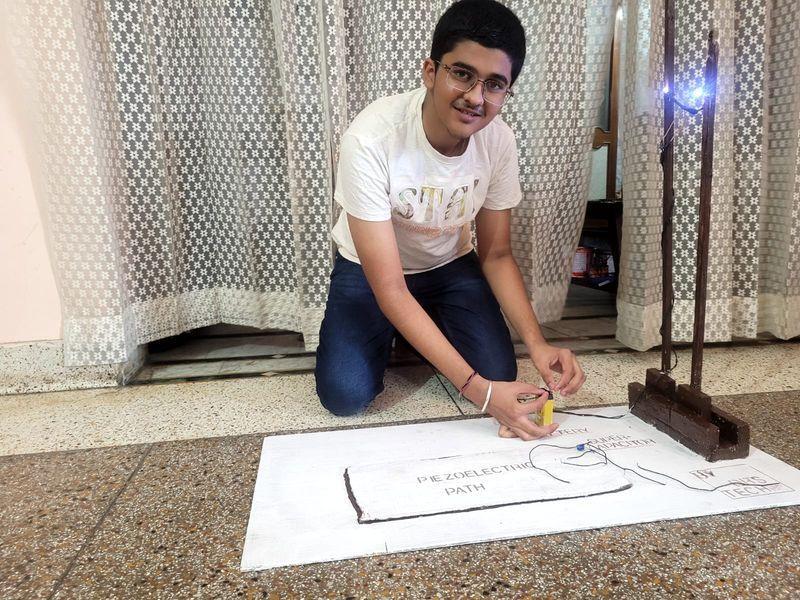
Hoshiarpur Student Builds Device to Generate Power from Footsteps
In a remarkable display of innovation and ingenuity, a Class 8 student from Hoshiarpur, Punjab, has developed a groundbreaking project that could revolutionize the way we think about power generation. Sanchit, the 13-year-old genius, has created a device that harnesses energy from the simplest of human activities – walking – to generate electricity. His project, dubbed “Power beneath our feet,” has already caught the attention of local officials, scientists, and enthusiasts alike.
The innovative device uses piezoelectric technology to convert the kinetic energy generated by footsteps into electrical energy. This energy can then be used to power small electronic devices, lamps, or even charge mobile phones. The implications of this technology are vast, particularly in areas where access to electricity is limited or unreliable.
Sanchit’s project began as a school assignment, where he was tasked with developing a science project that showcased his understanding of piezoelectricity. After conducting extensive research and experimentation, he designed and built the device, which consists of a series of piezoelectric sensors embedded in a flexible surface. When a person walks on the surface, the sensors detect the vibrations and convert them into electrical energy.
The device is remarkably simple and easy to use. Users simply need to step on the surface, and the device will generate electricity. The energy is then stored in a capacitor, which can be used to power devices or charge electronic devices.
Sanchit’s project has not gone unnoticed. Local officials, scientists, and enthusiasts have been impressed by his ingenuity and creativity. The Hoshiarpur district education officer, Mr. Rajinder Singh, praised Sanchit’s achievement, saying, “Sanchit’s project is a testament to the innovative spirit of young minds in our district. His project has the potential to make a significant impact on the lives of people, especially those living in areas where access to electricity is limited.”
Dr. Jagtar Singh, a scientist at the Punjab University, who reviewed Sanchit’s project, echoed similar sentiments. “Sanchit’s project is an excellent example of how science and technology can be used to create innovative solutions to everyday problems. His use of piezoelectric technology to generate electricity from footsteps is a game-changer.”
While Sanchit’s project is still in its early stages, it has the potential to transform the way we think about power generation. Imagine walking on a surface that generates electricity, which can then be used to power your phone or laptop. It’s a prospect that is both exciting and revolutionary.
Sanchit’s achievement is not only a testament to his hard work and dedication but also a reflection of the importance of investing in science education and innovation. His project serves as a reminder that even the smallest ideas can have a significant impact when combined with creativity, determination, and a passion for learning.
As Sanchit’s project continues to gain attention and recognition, it is likely that we will see more innovative applications of piezoelectric technology in the future. Who knows, maybe one day we will see entire cities powered by the simple act of walking.






